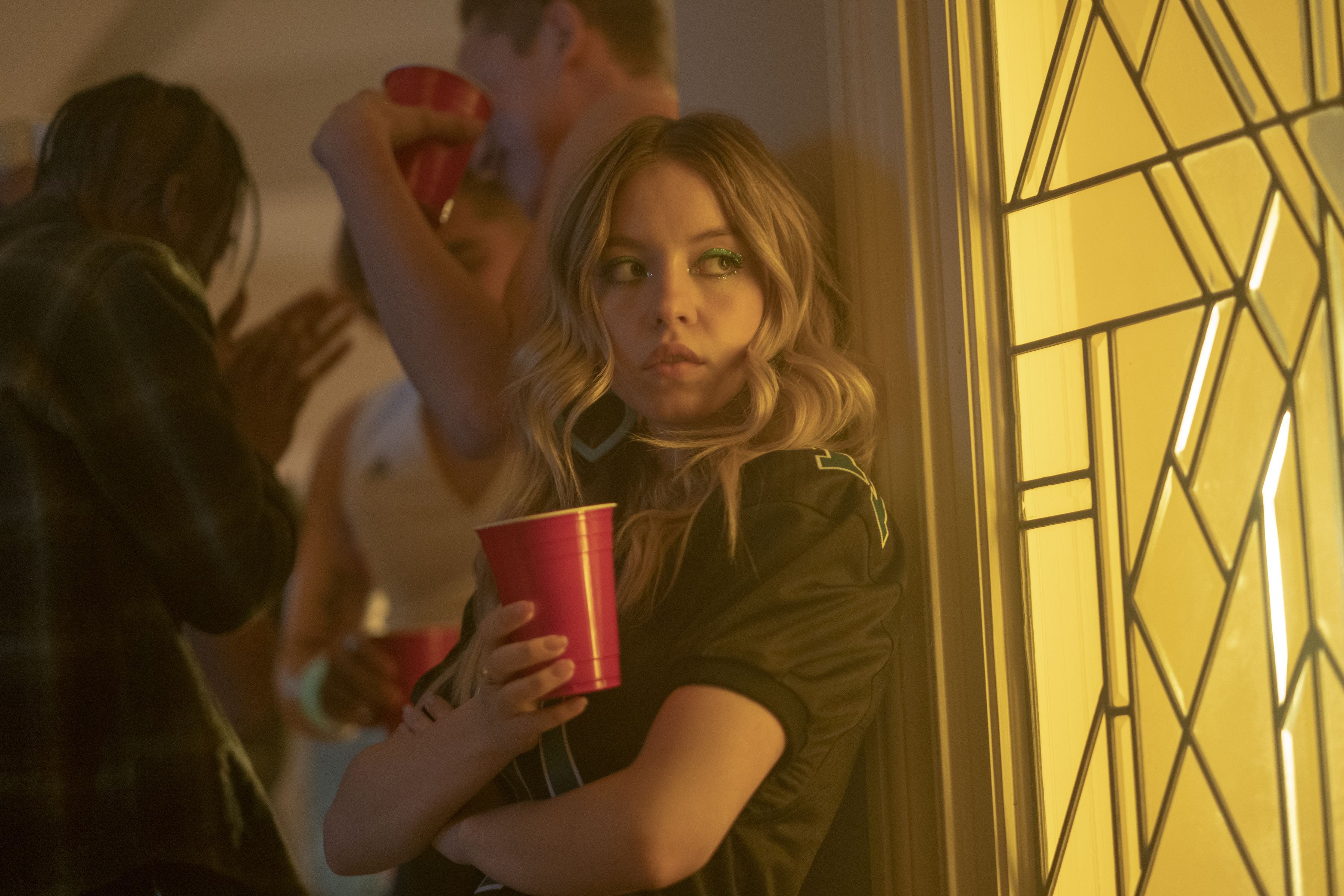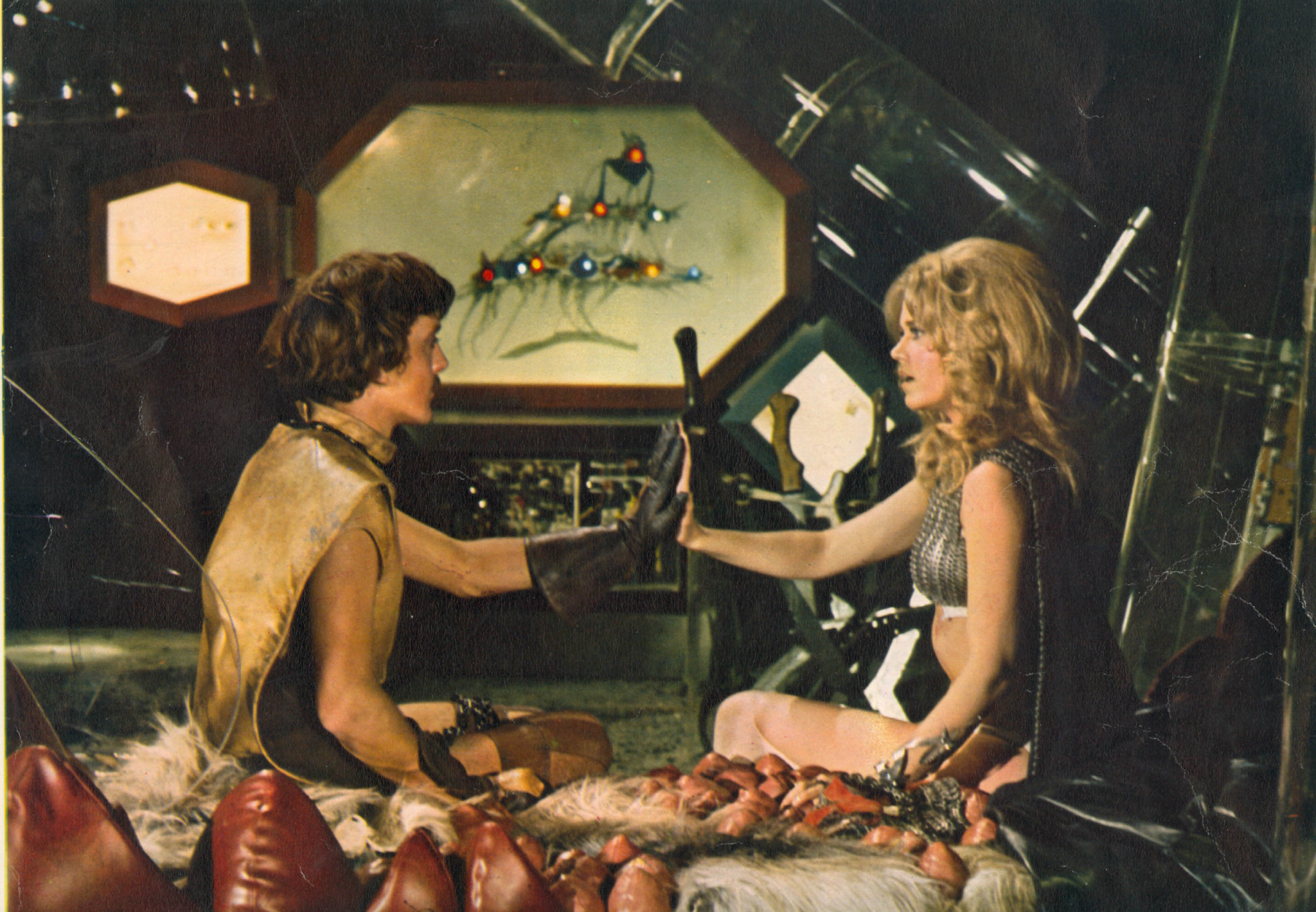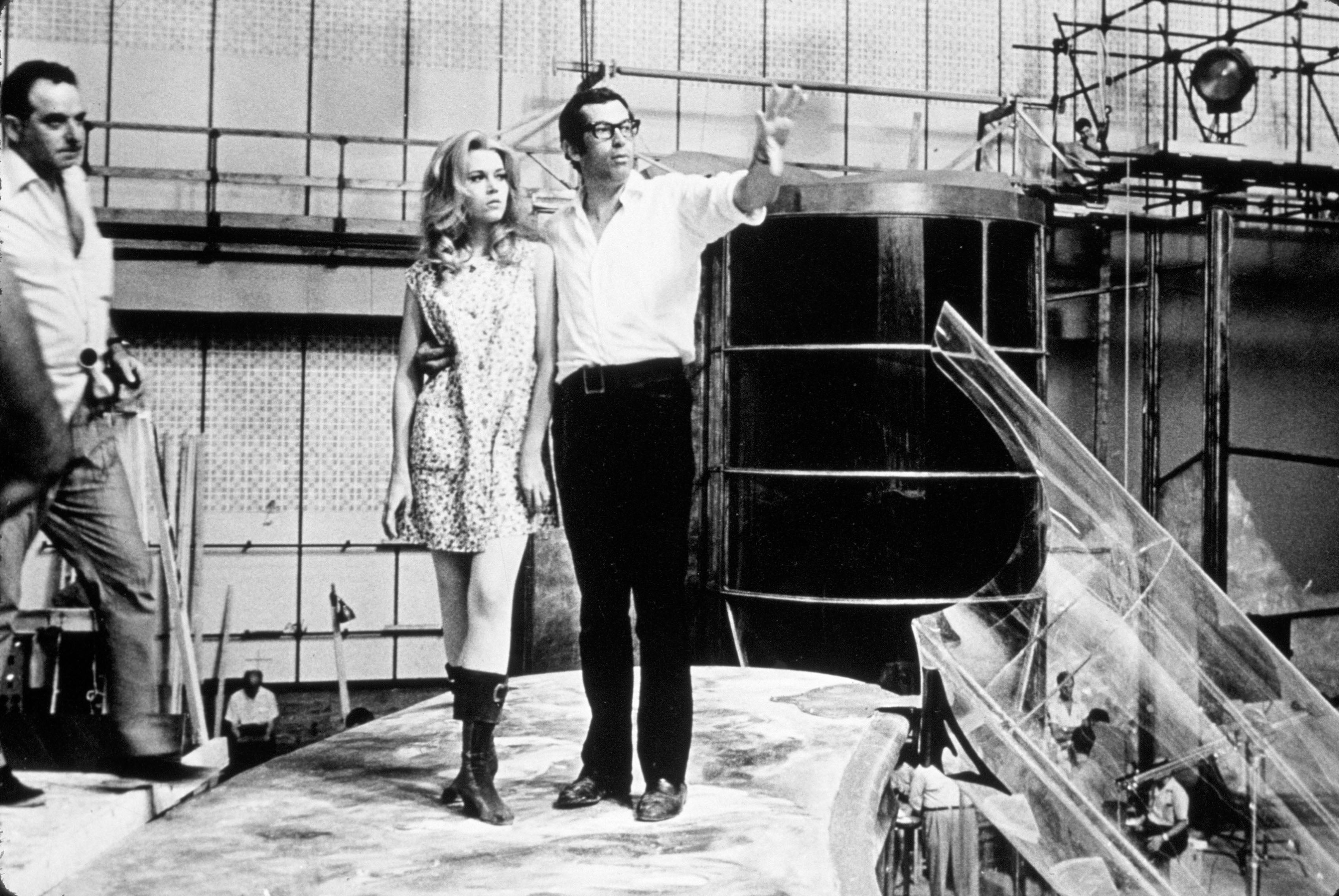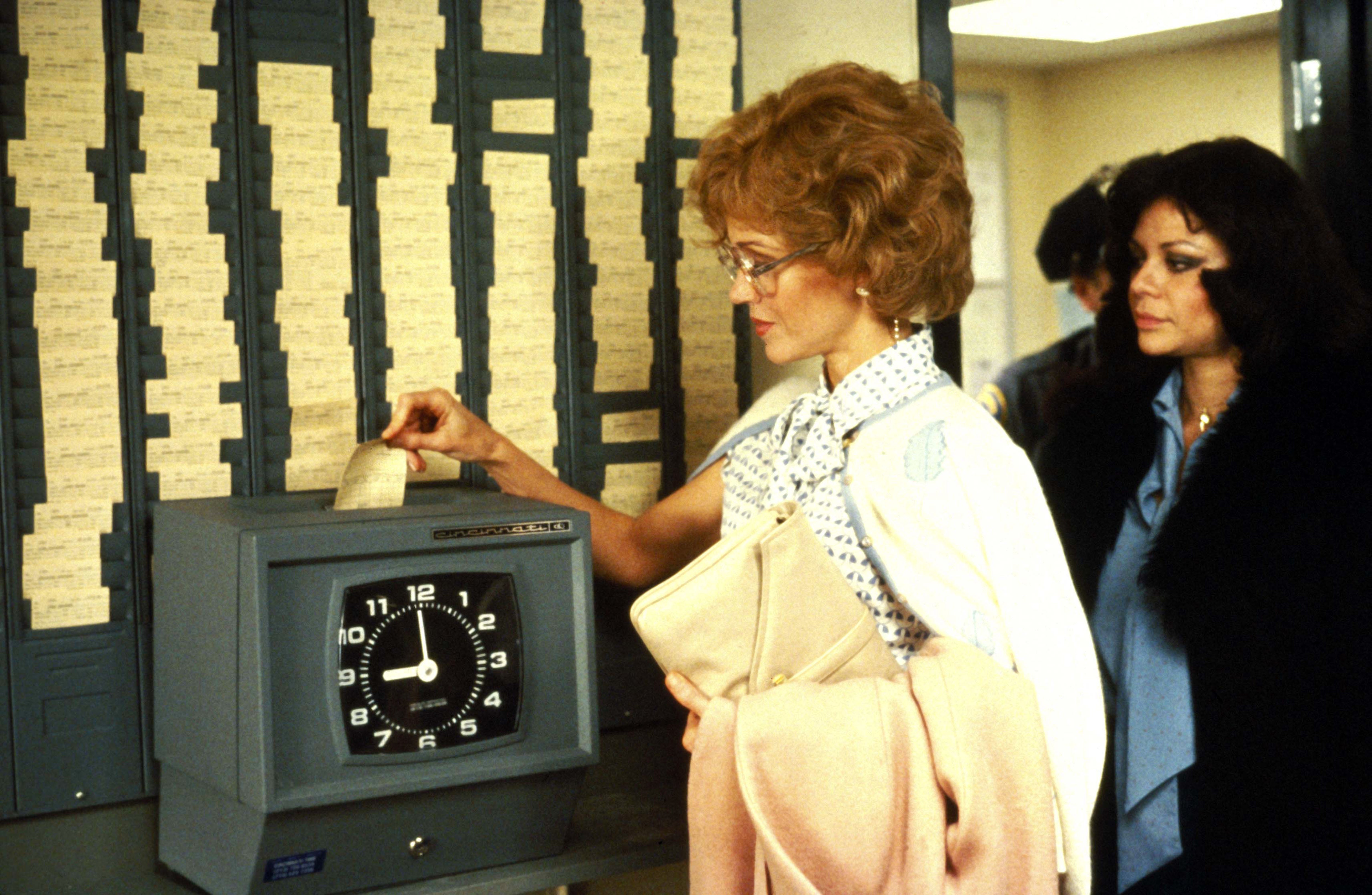
When Jane Fonda was preparing for the galactic striptease that opens the 1968 sci-fi fantasy Barbarella, she plied herself with vodka. She was so terrified that she made sure she was completely drunk before the cameras started rolling. A bat flew in front of the lens, spoiling the shot, and the director, her then-husband Roger Vadim, insisted that she shoot it again the next day.
“The take that was actually used, I was not only drunk. I was hungover too,” Fonda recalled in the 2018 documentary about her, Jane Fonda in Five Acts.
It’s one of the most memorable sequences in an otherwise patchy and eccentric movie that scarcely deserves its cult reputation. Fonda appears to be floating as she pulls off her outfit. In fact, she was lying on a pane of glass with the rest of the spaceship behind her for the shot. While she removes her helmet, gloves and eventually everything else, a bland pop song with inanely rhyming lyrics plays on the soundtrack. “Barbarella, psychedelia/Never can a fella name or clone you” or, even worse, “Barbarella, psychedelia/There’s a kinda cockleshell about you”.
Last week, Sydney Sweeney, the brilliant young star of TV’s Euphoria and The White Lotus, was announced as the new Barbarella, in a remake being planned by Sony Pictures. Details about the project are almost as skimpy as the outfits she’ll be expected to wear in the film. Trade publication Deadline reported that there was no writer or director yet attached, but that Sweeney was to be the executive producer.
“It’s such an iconic, fun character. And I want to keep that fun alive through Barbarella. So, I’m excited for everyone to see it,” Sweeney told Entertainment Tonight earlier this week.
The announcement of the new space adventure, vague though it was, prompted one immediate question: why on earth would Sweeney want such a thankless role? Fun certainly wasn’t how Fonda regarded making Barbarella. She took on the film under sufferance because Vadim had suggested it. “I wasn’t a questioner. Superficial can come pretty easy to me,” she later said about the docile way in which she did what Vadim said.
The American hadn’t wanted to perform the “weightless striptease”. “Once again, I just didn’t think I could say ‘no’,” she admitted in her autobiography, My Life So Far, about how, during this period, she always deferred to her French husband. “He promised that the letters in the film credits would be placed judiciously to cover what needed to be covered – and they were.”
Fonda was in the film primarily to be gawped at. Vadim was a Svengali who turned his female partners into international sex symbols. He did it for Brigitte Bardot in his St Tropez-set And God Created Woman (1956) and was now going to pull the same trick with his wife. He loved sci-fi, comedy and eroticism. The bestselling Barbarella cartoons, written and illustrated by Jean-Claude Forest, combined all three.
The film possesses a certain kitsch charm. It is shot in eye-popping colour by Claude Renoir, the grandson of the painter Pierre-Auguste Renoir and the nephew of filmmaker Jean Renoir. In its better moments, Barbarella possesses that mix of whimsy and gentle menace that you find in Tim Burton movies. There may be frequent references to sex, but the movie never feels smutty. Fonda is funny and engaging in the title role because she plays it in such a prim and earnest fashion.

Barbarella comes from a world in which lovemaking is conducted by partners taking pills (“exaltation transfer pellets”) and pushing their palms together until full rapport is achieved. When the hirsute handyman, Mark Hand, played by Ugo Tognazzi, suggests they get into bed together instead, she responds with disdain: “But nobody’s done that for centuries. Nobody except the very poor who can’t afford the pills and the psychocardiogram readings...”
Nonetheless, once she is talked into some old-fashioned sex, she discovers that she not only enjoys it but is very good at it. At one stage, late on, she is tied up in a music-playing orgasmatron machine in which she is supposed to die of extreme pleasure. Corpses of previous victims lie nearby but Fonda’s amorous power short circuits and breaks the machine. The film includes multiple close-ups of the star’s face and her eyes, which are even bluer than those of her celebrated father, screen legend Henry Fonda.
Occasionally, Vadim includes horror film elements and even references to Alfred Hitchcock. Early on, after her spaceship crash lands on a distant planet, Barbarella is accosted by a pair of young girls. They turn out to be little sadists, unleashing dolls with razor-sharp teeth on her. Later, she is locked in a cage with some equally voracious birds, “pecking and pooping in my hair” as she later recalled.
Other sequences, though, wouldn’t look out of place in a Carry On comedy. For example, in the underground headquarters of the revolutionary leader Dildano (David Hemmings), none of the gadgets seem to work. He will pull a lever and it will come away in his hand. While some of the special effects have the same naive charm as those in old silent movies like Georges Méliès’s A Trip to the Moon (1902) in which rockets plop into gooey lunar surfaces like sponge fingers landing in custard.

Outer space as imagined by Vadim resembles psychedelic 1960s nightclubs. It is full of strange characters played by actors like Anita Pallenberg, as the Dominatrix-like “Great Tyrant”, and mime artist Marcel Marceau, incongruously cast in a speaking role as the white-bearded, pixie-like Professor Ping. Plinky-plonky music adds to the general sense of frivolity.
The plot is some hokum about Barbarella being sent by the President of the Republic of Earth to track down Durand Durand, who has invented a weapon of mass destruction – “a positronic ray”. She spends much of the movie in the presence of Pygar, a bronzed, Adonis-like angel (John Phillip Law) who is blind and reluctant to fly.
At the time it was released, no one mistook the film for any kind of masterpiece. Nonetheless, it has had a far bigger and more lasting influence than many other much better films from the period. Everyone was fascinated with the idea of Fonda in a risque intergalactic sex comedy. She was put on the cover of magazines in the US and Europe. Vadim succeeded in his goal of turning Fonda into a full-blown international movie star. He also provided inspiration for fashion designers and new romantic pop bands.
Like Bardot, Fonda soon switched from Vadim, the high priest of voyeuristic kitsch, to working with Jean-Luc Godard, the most radical and provocative French director of the era. By 1972, her transformation was complete. The pin-up from Barbarella, the “scantily clad – sometimes naked – sexual heroine”, as Fonda characterised the role, had turned into “Hanoi Jane”.

She was back on the front covers but no longer the object of voyeuristic male fascination. Thanks to her trip to North Vietnam in the middle of the Vietnam war to draw attention to the US bombing of the country, she was now regarded as a subversive and a traitor. Furious right-wing commentators were so busy condemning her as un-American that they stopped leering at her.
Since the Barbarella days, Fonda has also been a tireless campaigner for women’s rights. She appears in Camille Hardman’s new documentary, Still Working 9 to 5 – it was released in the US last month. This looks back at the 1980 comedy 9 to 5, in which Fonda and co-stars Lily Tomlin and Dolly Parton played office workers suffering from the slings and arrows of outrageous workplace sexism.
Forty years later, the documentary concludes, not that much has changed in office culture – gender inequality still rules, and harassment and bullying remain rife. Fonda, though, keeps up the fight. The idea for making 9 to 5 came out of her friendship with activist Karen Nussbaum who in the early 1970s had co-founded the 9 to 5 National Association of Working Women.
“Jane Fonda, as we all know, is a stalwart for women’s rights and has been for a very long time,” director Hardman said admiringly of the actor during a Women in Film event at the Doclisboa Festival in Lisbon last week.

Barbarella represented precisely the chauvinism Fonda would later react so strongly against. This was a supremely goofy movie, based on a French comic strip, about a female space traveller who roams the galaxies having amorous adventures –and is humiliated along the way. Nonetheless, Fonda has learned to live with her space sex adventure and no longer sees it as “gender betrayal”. In Jane Fonda in Five Acts, she describes it almost with affection as “just a camp romp. Really ... I don’t think it is particularly sexy”. After many decades, she observed, she has reached “a place where I can ... share the enjoyment of the film’s unique charms”.
Fonda’s galactic gallivanting transformed her career but it’s hard to see Sweeney benefitting in the same way. Sweeney is surely much better advised to stay put on Earth than to strip off in space. Barbarella is one Sixties screen heroine who should be left well alone. Turning a male fantasy figure into a feminist icon is a near impossible task – and that old orgasmatron machine is surely well beyond rebooting by now.







